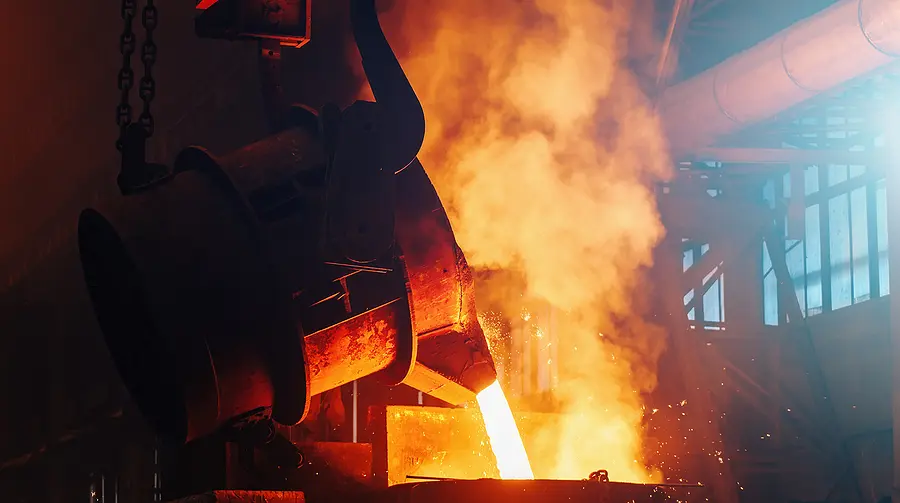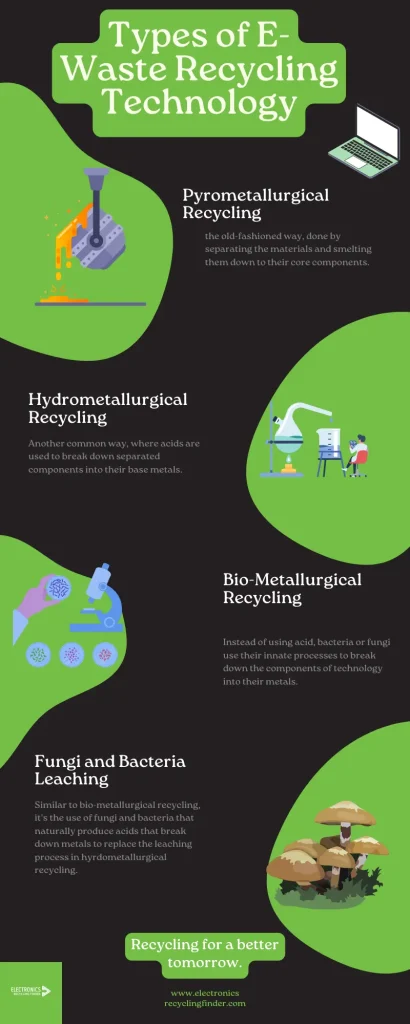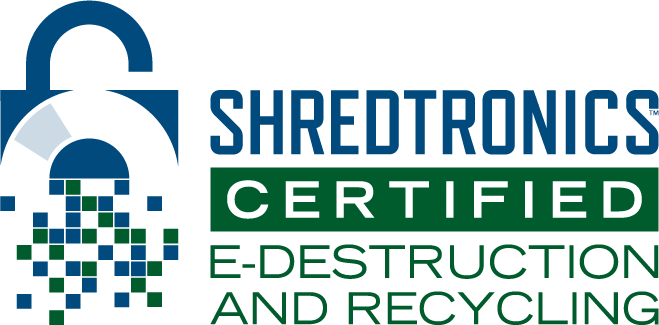
The amount of E-waste the world produces a year is a staggering 50 million tons a year, and only growing. While that’s only a fraction of the overall waste the world generates, it makes up the lion’s share of toxic waste. As such, it’s more important than ever to produce effective and efficient e-waste recycling technology.
Much of the technology we use now involves older techniques, converted to e-waste recycling. Smelting down metal, using acidic solutions to break down components, shredding, and magnetizing. However, as the e-waste problem grows, so too are the solutions to it. Novel ideas are being pioneered to recover as much as possible from our discarded technology.
Types of E-Waste Recycling Technology in Use
Pyrometallurgical Recycling
The most common type of e-waste recycling, as it can recover metals quickly and at a high volume. Typically, this method involves breaking down an old piece of technology into its key components, either by hand, chemical, or heat. After separating, disparate pieces are ran through smelters, which break them down to their base materials. Other technologies then recycle the non-metallic components.
Hydrometallurgical Recycling
This method of recycling is a bit more complicated than pyrometallurgical, but it’s still an effective method. It begins with leaching, which involves placing the metals or components in a solution that contains a type of acid. The acid is tailored to the type of metal being extracted.

Following the leaching, concentration and purification of the metal ions occurs. There are a few different ways to accomplish this. Once the metals are concentrated and purified, they need to be recovered. This step happens through electrolysis or precipitation, or, in simpler terms, through the use of magnets or more acids.
While this method requires less energy and produces fewer emissions than the pyrometallurgical method, it does unfortunately produce some toxic waste due to the acids and solutions used in the process.
E-Waste Recycling Technology Under Development
Bio-Metallurgical Recycling
This e-waste recycling technology is newer, but currently showing great promise. Some species of fungi and bacteria have innate processes that break down metals. Researchers are currently working to scale this and engineer the bacteria to be more efficient at breaking down material. While still largely in development, this method presents a much more environmentally friendly way to recycle e-waste.
Fungi and Bacteria Leaching
Scientists are currently conducting trials with fungi and bacteria that convert materials as simple as glucose into acids capable of breaking down metallic products. The leaching process is one of the most toxic-waste-producing steps of the hydrometallurgical recycling process. These organisms could potentially replace it, helping reduce technology’s negative impact on the environment.
Choose a Sustainable Solution for your E-Waste with ShredTronics
If you’re looking to reduce your own e-waste’s impact on the environment, ShredTronics can help. We partner with a nationwide network of sustainable and affordable recycling providers who can make sure your old technology doesn’t end up in a landfill. Give us a call at (844) 648-4908, or fill out the form. We’ll find you a recycling solution in just minutes.











